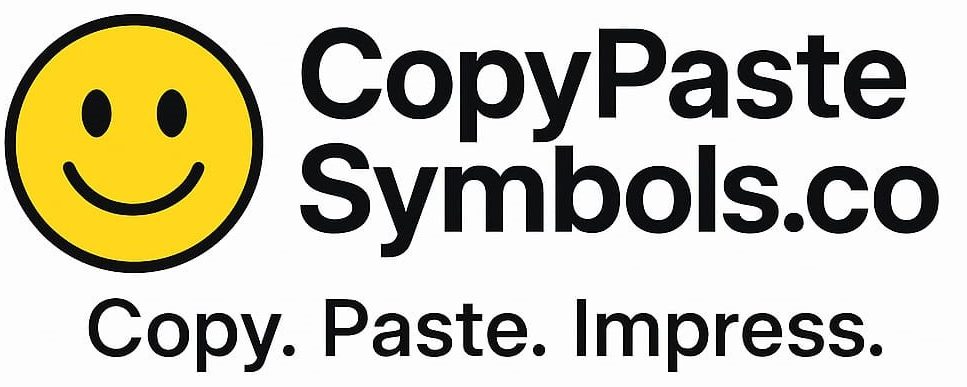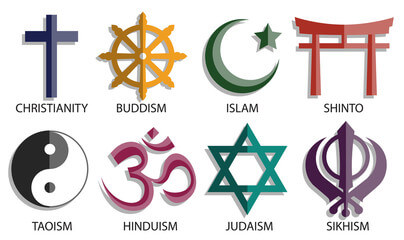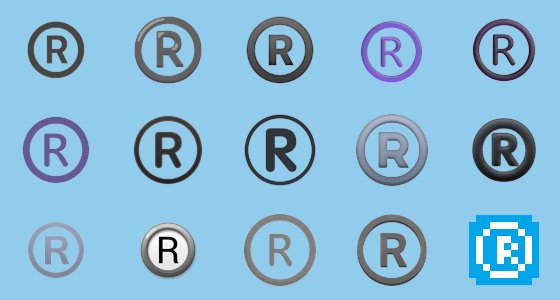Looking to copy and paste the ™ trademark symbol quickly and hassle-free? You’re in the right place! Whether you’re a business owner, designer, marketer, or just someone working on a branding project, using the ™ (trademark) symbol properly is essential to represent ownership, protection, and authenticity. This blog post provides you with instant access to ™, ® (registered trademark), and © (copyright) symbols — all ready to copy with a single click.
No more searching for keyboard shortcuts or confusing character codes! We’ll also show you how to use these symbols legally, where they apply best, and answer the most frequently asked questions about them. Bookmark this page for quick reference anytime you need to add a professional touch to your content, product names, or legal documents.
Trademark Symbol Copy and Paste
In today’s fast-paced digital world, protecting your brand identity is more important than ever. Whether you’re naming a product, designing a logo, or publishing marketing content, the use of trademark symbols™ plays a vital role in asserting your ownership rights and enhancing your professional credibility. Symbols like ™, ®, and © aren’t just legal marks—they send a clear message: This name, idea, or creation belongs to someone.
But let’s face it—typing or inserting these symbols isn’t always straightforward. That’s why we’ve created this simple, copy-and-paste guide to help you access these symbols instantly, without hunting for special characters or memorizing keyboard shortcuts.
Whether you’re a small business owner, marketer, graphic designer, social media manager, or content creator, this blog is your go-to resource for everything you need to know about the ™ trademark symbol and its related legal marks. Stick around to copy, learn, and use these powerful tools the right way.
What Does the ™ Symbol Mean?
The ™ (trademark) symbol is used to signal that a name, phrase, logo, or design is being claimed as a trademark—even if it hasn’t been officially registered with a government agency. It’s a way of publicly declaring ownership or branding rights over a word or symbol that represents your business, product, or service.
✔ Definition and Purpose
The ™ symbol stands for “trademark” and is commonly placed after a brand name or logo to indicate that it is being claimed as intellectual property. It doesn’t require legal registration, making it ideal for startups, small businesses, or creators who want to protect their work informally.
Example:GlowSkin™ – A product name claimed by the owner as a unique trademark.
✔ When to Use the ™ Symbol
Use ™ when:
-
You haven’t registered your trademark yet
-
You’re launching a new product or brand
-
You want to signal ownership and deter imitators
-
You’re using the mark in specific regions or industries where registration isn’t required
It can be added to:
-
Product names
-
Business slogans
-
Logo designs
-
Marketing materials
✔ Difference Between ™ and ®
| Symbol | Use Case | Registration Required? | Legal Weight |
|---|---|---|---|
| ™ | Brand or slogan claim (unregistered) | ❌ No | Moderate – signals intent |
| ® | Registered trademark only | ✅ Yes | Strong – protected by law |
⚠️ Important: Using the ® symbol without actual registration is illegal in many jurisdictions. Always use ™ unless your trademark is officially registered.
How to Type the Trademark Symbol (™)
Need to insert the ™ symbol without copying and pasting every time? Here’s how to type the trademark symbol manually on different devices and platforms. Whether you’re working on Windows, Mac, smartphone, or cloud apps like Google Docs, we’ve got you covered.
🖥️ On Windows (Alt Code)
You can use the Alt code method with the numeric keypad:
-
Hold
Altand type0153on the numeric keypad -
Release
Altand ™ will appear -
Example:
Alt + 0153→ ™
Note: This works only if your keyboard has a dedicated number pad.
🍎 On Mac
Typing the trademark symbol on a Mac is super simple:
-
Press
Option+2 -
Example:
Option + 2→ ™
📱 On Mobile (iOS & Android)
Most smartphones let you insert the ™ symbol through the built-in keyboard:
-
iOS (iPhone/iPad):
-
Hold the “R” key on the keyboard, or go to Emoji/Symbols → Legal section (depending on your keyboard)
-
Select
™from the list
-
-
Android:
-
Tap the Symbols or Emoji button
-
Look under punctuation or legal symbols
-
Select
™
-
Tip: You can also long-press and copy the ™ symbol from here.
📄 In Microsoft Word, Excel, PowerPoint
Typing ™ in MS Office apps is easy:
-
AutoCorrect Shortcut: Type
(tm)and it will automatically convert to ™ -
Or insert via:
-
Insert → Symbol → More Symbols
-
Find and click on
™, then hit Insert
-
📝 In Google Docs or Google Sheets
-
Go to Insert → Special characters
-
Search for “trademark” or paste this:
™ -
Click to insert it directly into your document
💡 Pro Tip: If you use the ™ symbol often, consider adding it to your text expander, clipboard manager, or shortcuts for faster access.
Trademark vs Registered vs Copyright: Key Differences
If you’ve ever been confused about when to use ™, ®, or ©, you’re not alone. These symbols each serve a unique legal purpose, and using the wrong one can lead to legal risks or misrepresentation. Here’s a simple breakdown to help you understand the differences and use them correctly.
🧠 Quick Overview Table
| Symbol | Name | Meaning | Usage |
|---|---|---|---|
| ™ | Trademark | Claiming ownership (unregistered) | Product names, slogans, services |
| ® | Registered Trademark | Officially registered with legal authority | Registered brands or products |
| © | Copyright | Protects original creative work | Texts, images, music, software |
✔ ™ Trademark
Used to claim ownership of a brand name, slogan, or logo that hasn’t been officially registered yet. It signals that you’re asserting a legal interest in the mark.
Example: FreshBrew™ Coffee
✔ ® Registered Trademark
Used only after official registration with a country’s trademark office (like USPTO in the U.S.). It provides strong legal protection and deters infringement.
Example: Nike® Shoes
⚠️ Important: Using ® without proper registration is illegal in many jurisdictions.
✔ © Copyright
Protects original creative works such as books, songs, videos, art, and digital content. It grants the creator exclusive rights to reproduce, distribute, and display the work.
Example: © 2025 John Doe. All rights reserved.
- 💡 Tip for Brands:
If you’re launching a new brand or product, start by using ™. Once registered, switch to ®. Always use © for any original content you publish.
Where and When to Use the ™ Symbol
Using the ™ symbol can help you establish and protect your brand identity—even if your mark isn’t officially registered yet. It’s a proactive way to let others know you’re claiming a name, slogan, or logo as your intellectual property.
✔ Where to Use the ™ Symbol
The ™ symbol can be used across a wide range of branding and marketing materials, including:
-
✅ Product Names: e.g., GlowBright™ Serum
-
✅ Business or Brand Names: e.g., UrbanStyle™ Clothing
-
✅ Slogans or Taglines: e.g., “Fuel Your Hustle™”
-
✅ Logos and Icons: Add ™ next to visual branding assets
-
✅ Websites and Packaging: Ideal for headers, banners, or product labels
-
✅ Brochures, Flyers & Ads: Reinforces brand claim without registration
✔ When to Use the ™ Symbol
You should use ™ if:
-
Your trademark is not yet registered with a government trademark office
-
You’re in the process of registering your trademark
-
You want to claim common law trademark rights (based on usage, not registration)
-
You’re testing or launching a new brand and want to discourage imitation
-
You operate in a region where registration is not required to claim a trademark
⚠️ Important Note:
Using ™ does not guarantee legal protection in court, but it strengthens your position in a dispute by showing your intent to claim ownership.
✅ Best Practice:
Use the ™ symbol consistently across all platforms where your brand or product appears to build recognition and support future trademark registration.
Trademark Symbols HTML, Unicode & CSS Reference Table
| Format | Code / Value | Output | Usage Example |
|---|---|---|---|
| HTML Entity | ™ |
™ | <p>Brand™</p> |
| HTML Decimal Code | ™ |
™ | <span>™</span> |
| HTML Hex Code | ™ |
™ | <div>™</div> |
| Unicode Value | U+2122 |
™ | Used in code editors or fonts |
| JavaScript/JSON Escape | \u2122 |
™ | const symbol = "\u2122"; |
| CSS Content Code | \2122 |
™ | .brand::after { content: "\2122"; } |
| Windows Alt Code | Alt + 0153 |
™ | Type using numeric keypad on Windows |
- 💡 Tip: Use the HTML entity (
™) for best compatibility across websites and email clients.
Legal Disclaimer: Use with Caution
While symbols like ™, ®, and © may seem simple, their misuse can lead to legal consequences—especially when you’re dealing with registered trademarks or copyrighted material. It’s important to understand the legal boundaries before placing any of these symbols next to your brand or content.
✔ The ™ Symbol – Low Risk, But Still Serious
-
The ™ symbol can be used without legal registration, but it doesn’t offer full protection.
-
Using it falsely or deceptively can still harm your credibility or invite legal scrutiny.
-
It shows intent to claim a name or logo, which can help in disputes—but it doesn’t ensure court-enforceable rights.
✔ The ® Symbol – Use ONLY If Registered
-
The ® symbol is reserved for marks that are officially registered with a trademark authority (like USPTO, IPO Pakistan, etc.).
-
Using ® without legal registration is considered trademark fraud in many countries and could result in:
-
Legal action
-
Fines or penalties
-
Rejection of your actual registration in the future
-
✔ Always Check Local Laws
Trademark and copyright laws vary by country. For example:
-
In the United States, common law trademark rights may exist just through usage.
-
In the UK or EU, legal rights typically begin upon registration.
-
In Pakistan, unregistered marks have limited legal recognition unless proven in court.
Consulting a trademark attorney or legal advisor is highly recommended if:
-
You’re planning to register a trademark internationally
-
You suspect someone is infringing on your brand
-
You’re unsure about the correct symbol to use
📌 Final Reminder: Using the right symbol isn’t just about looking professional—it’s about playing by the rules. Make sure your brand protection strategy aligns with the law to avoid headaches down the road.
Related Symbols You May Like
If you’re working with legal, creative, or brand-related content, here are some related symbols you might find useful. All are ready to copy and paste with ease:
| Symbol | Name | Usage |
|---|---|---|
| ® | Registered Trademark | Legally registered brand names/logos |
| © | Copyright | Creative works (text, images, videos) |
| ℠ | Service Mark | Trademark for services (U.S. only) |
| § | Section Sign | Legal references and citations |
| ¶ | Pilcrow (Paragraph) | Editing and formatting documents |
| ‰ | Per Mille | Statistical and financial content |
FAQs
Got questions about when and how to use ™, ®, or ©? You’re not alone! Here are the most frequently asked questions about trademark and copyright symbols—clearly answered for creators, businesses, and developers.
❓ Can I use the ™ symbol without registering my brand?
✅ Yes! The ™ symbol can be used freely to show that you’re claiming a name, slogan, or logo as your trademark—even if it’s not officially registered. It’s commonly used by startups and small businesses.
❓ Is it illegal to use the ® symbol if my trademark isn’t registered?
⚠️ Yes. The ® symbol is only allowed once your trademark is legally registered with a government authority like the USPTO or IPO. Misusing it can lead to fines, lawsuits, or rejection of your future application.
❓ What’s the difference between ™ and ©?
-
™ is used to claim brand names, products, or services (unregistered trademarks).
-
© is used to protect original creative works like books, music, videos, art, or software.
❓ Can I use these symbols on my social media posts?
✅ Absolutely! You can add ™, ®, or © to usernames, bios, captions, hashtags, and logos on platforms like Instagram, Twitter, LinkedIn, and Facebook. Just ensure you’re using the right symbol for your situation.
❓ How do I insert a trademark symbol in Word or Google Docs?
-
In MS Word: Type
(tm)and it will auto-convert to ™, or go to Insert → Symbol → More Symbols -
In Google Docs: Use Insert → Special characters and search “trademark”
❓ Do I need to trademark my brand to protect it?
While using ™ gives you common law rights, registering your trademark provides stronger legal protection, especially if your business grows or you face copycats.
Conclusion
Using the right symbols like ™, ®, and © isn’t just a formatting trick—it’s a smart move to protect your brand, identity, and intellectual property. Whether you’re launching a new product, building your online presence, or publishing creative work, adding these symbols adds credibility, clarity, and legal value.
With this guide, you now have everything you need to copy, paste, and understand the trademark symbol—and when and where to use it. So go ahead, apply it to your brand with confidence and professionalism.
- 👉 Copy your favorite symbol above
- 🔖 Bookmark this page for future reference




